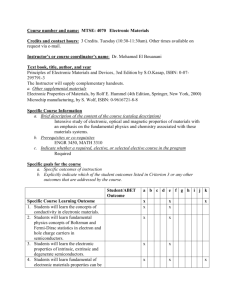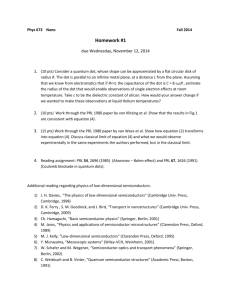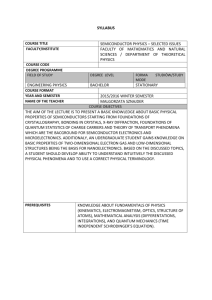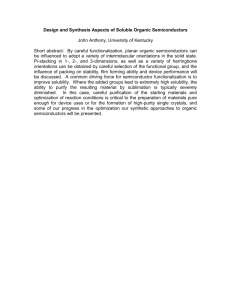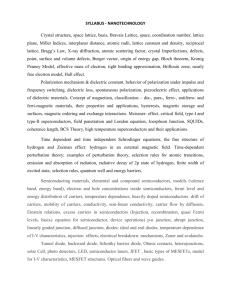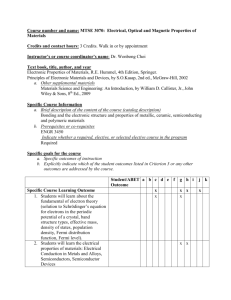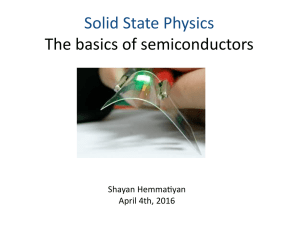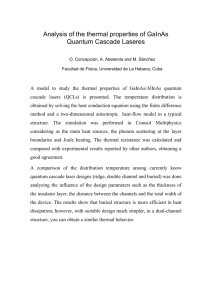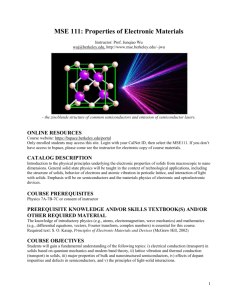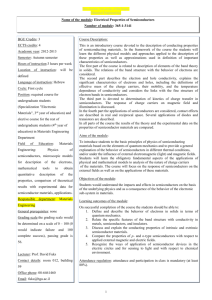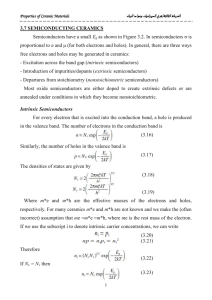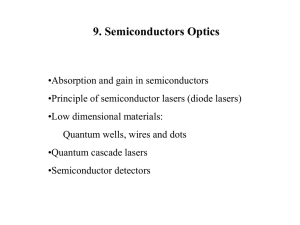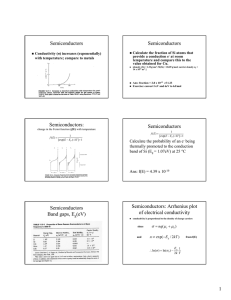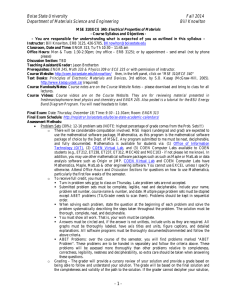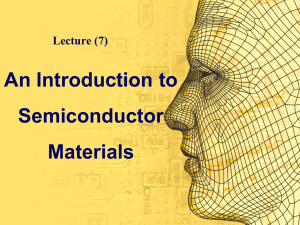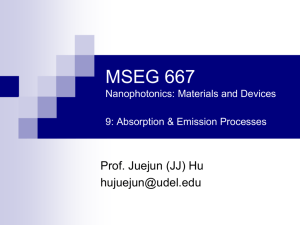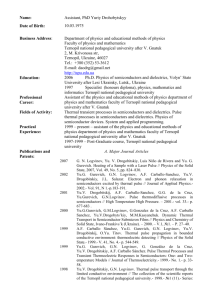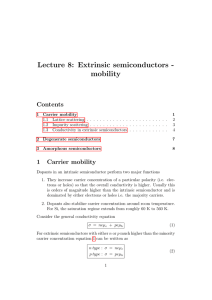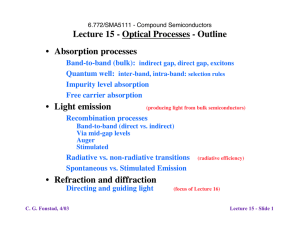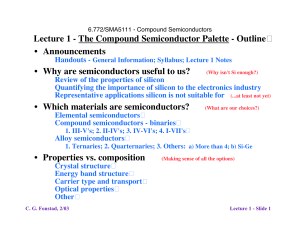For description click here - Materials Science & Engineering
advertisement
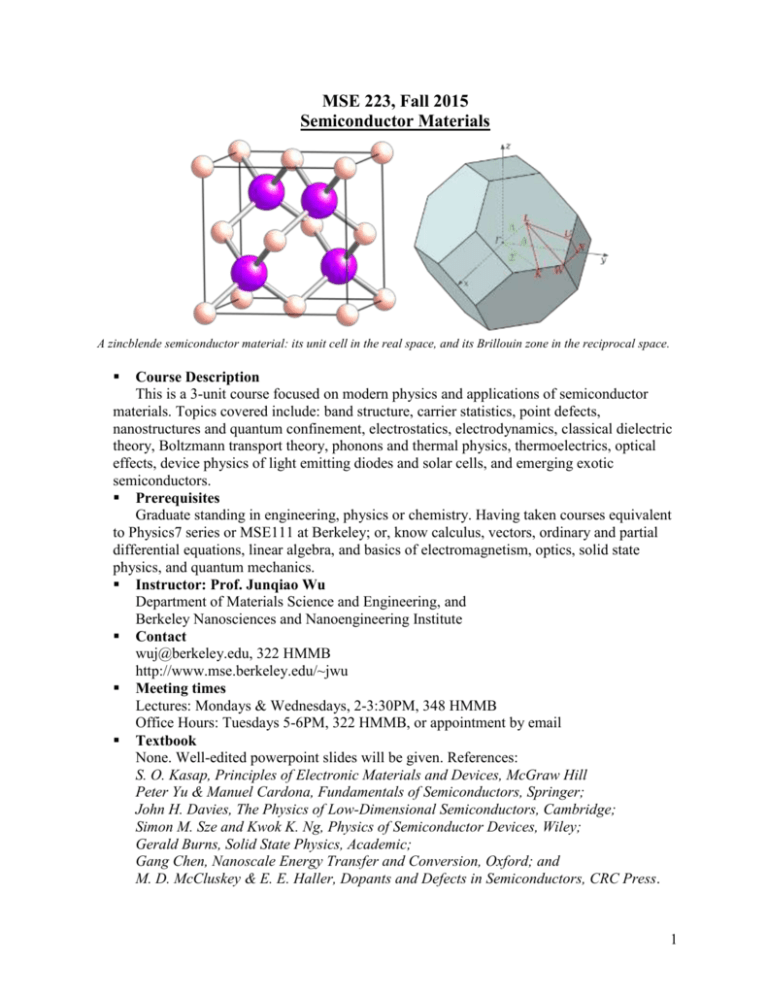
MSE 223, Fall 2015 Semiconductor Materials A zincblende semiconductor material: its unit cell in the real space, and its Brillouin zone in the reciprocal space. Course Description This is a 3-unit course focused on modern physics and applications of semiconductor materials. Topics covered include: band structure, carrier statistics, point defects, nanostructures and quantum confinement, electrostatics, electrodynamics, classical dielectric theory, Boltzmann transport theory, phonons and thermal physics, thermoelectrics, optical effects, device physics of light emitting diodes and solar cells, and emerging exotic semiconductors. Prerequisites Graduate standing in engineering, physics or chemistry. Having taken courses equivalent to Physics7 series or MSE111 at Berkeley; or, know calculus, vectors, ordinary and partial differential equations, linear algebra, and basics of electromagnetism, optics, solid state physics, and quantum mechanics. Instructor: Prof. Junqiao Wu Department of Materials Science and Engineering, and Berkeley Nanosciences and Nanoengineering Institute Contact wuj@berkeley.edu, 322 HMMB http://www.mse.berkeley.edu/~jwu Meeting times Lectures: Mondays & Wednesdays, 2-3:30PM, 348 HMMB Office Hours: Tuesdays 5-6PM, 322 HMMB, or appointment by email Textbook None. Well-edited powerpoint slides will be given. References: S. O. Kasap, Principles of Electronic Materials and Devices, McGraw Hill Peter Yu & Manuel Cardona, Fundamentals of Semiconductors, Springer; John H. Davies, The Physics of Low-Dimensional Semiconductors, Cambridge; Simon M. Sze and Kwok K. Ng, Physics of Semiconductor Devices, Wiley; Gerald Burns, Solid State Physics, Academic; Gang Chen, Nanoscale Energy Transfer and Conversion, Oxford; and M. D. McCluskey & E. E. Haller, Dopants and Defects in Semiconductors, CRC Press. 1 Course content 1. Introduction semiconductors out of the Periodic Table, general trends in semiconductors 2. Energy bands 1) Basic band theory k-space, Brillouin zone, band structure, density of states, Fermi distribution, free carrier statistics 2) Effective mass approximation k-dot-p theory, point defects, exciton 3) Nanostructures quantum confinement, quantum dot, nanowire, dimensionality 3. Electrostatics 1) Poisson equation Maxwell equations, Poisson equation, screening length 2) Band bending depletion and accumulation, capacitance-voltage measurement, carrier equilibration 3) P-N junction band diagram, diffusion and drift currents, quasi Fermi level, I-V curve, the diode equation 4. Electrodynamics 1) The Drude model charge transport, mean free time and path, mobility, Hall effect 2) Classical dielectric theory relationships among optical parameters, classical oscillator model, plasma frequency 3) Boltzmann transport equation relaxation time approximation, solutions, electrical conduction, thermal conduction 5. Thermal effects 1) Phonons and lattice vibration 1D lattice model, acoustic and optical phonons, lattice specific heat 2) Thermal conductivity electronic thermal conductivity, lattice thermal conductivity, phonon scattering 3) Thermoelectrics Seebeck and Peltier effects, thermopower, figure of merit, quest for high ZT 6. Optical effects 1) Light-semiconductor interaction bandgap absorption, oscillator strength, excitonic absorption, defects absorption, phonon absorption, free-carrier absorption, light emission 2) Device physics of light emitting diodes and solar cells device structure, carrier dynamics, energy efficiency, materials consideration 7. Emerging semiconductors 1) Transparent conductive oxides 2) Graphene 3) Other 2D semiconductors 2 MSE223 Course Grading policy: - 5 Homeworks: 20% - Midterm exam (closed book, equations and constants provided): 30% - Final exam (closed book, equations and constants provided): 50% 3
